José M. Bioucas-Dias
Compressive Single-pixel Fourier Transform Imaging using Structured Illumination
Oct 31, 2018



Abstract:Single Pixel (SP) imaging is now a reality in many applications, e.g., biomedical ultrathin endoscope and fluorescent spectroscopy. In this context, many schemes exist to improve the light throughput of these device, e.g., using structured illumination driven by compressive sensing theory. In this work, we consider the combination of SP imaging with Fourier Transform Interferometry (SP-FTI) to reach high-resolution HyperSpectral (HS) imaging, as desirable, e.g., in fluorescent spectroscopy. While this association is not new, we here focus on optimizing the spatial illumination, structured as Hadamard patterns, during the optical path progression. We follow a variable density sampling strategy for space-time coding of the light illumination, and show theoretically and numerically that this scheme allows us to reduce the number of measurements and light-exposure of the observed object compared to conventional compressive SP-FTI.
Compressive Hyperspectral Imaging: Fourier Transform Interferometry meets Single Pixel Camera
Sep 04, 2018


Abstract:This paper introduces a single-pixel HyperSpectral (HS) imaging framework based on Fourier Transform Interferometry (FTI). By combining a space-time coding of the light illumination with partial interferometric observations of a collimated light beam (observed by a single pixel), our system benefits from (i) reduced measurement rate and light-exposure of the observed object compared to common (Nyquist) FTI imagers, and (ii) high spectral resolution as desirable in, e.g., Fluorescence Spectroscopy (FS). From the principles of compressive sensing with multilevel sampling, our method leverages the sparsity "in level" of FS data, both in the spectral and the spatial domains. This allows us to optimize the space-time light coding using time-modulated Hadamard patterns. We confirm the effectiveness of our approach by a few numerical experiments.
Scene-Adapted Plug-and-Play Algorithm with Guaranteed Convergence: Applications to Data Fusion in Imaging
Jan 02, 2018



Abstract:The recently proposed plug-and-play (PnP) framework allows leveraging recent developments in image denoising to tackle other, more involved, imaging inverse problems. In a PnP method, a black-box denoiser is plugged into an iterative algorithm, taking the place of a formal denoising step that corresponds to the proximity operator of some convex regularizer. While this approach offers flexibility and excellent performance, convergence of the resulting algorithm may be hard to analyze, as most state-of-the-art denoisers lack an explicit underlying objective function. In this paper, we propose a PnP approach where a scene-adapted prior (i.e., where the denoiser is targeted to the specific scene being imaged) is plugged into ADMM (alternating direction method of multipliers), and prove convergence of the resulting algorithm. Finally, we apply the proposed framework in two different imaging inverse problems: hyperspectral sharpening/fusion and image deblurring from blurred/noisy image pairs.
Scene-adapted plug-and-play algorithm with convergence guarantees
Nov 08, 2017


Abstract:Recent frameworks, such as the so-called plug-and-play, allow us to leverage the developments in image denoising to tackle other, and more involved, problems in image processing. As the name suggests, state-of-the-art denoisers are plugged into an iterative algorithm that alternates between a denoising step and the inversion of the observation operator. While these tools offer flexibility, the convergence of the resulting algorithm may be difficult to analyse. In this paper, we plug a state-of-the-art denoiser, based on a Gaussian mixture model, in the iterations of an alternating direction method of multipliers and prove the algorithm is guaranteed to converge. Moreover, we build upon the concept of scene-adapted priors where we learn a model targeted to a specific scene being imaged, and apply the proposed method to address the hyperspectral sharpening problem.
Image Restoration with Locally Selected Class-Adapted Models
Aug 02, 2016



Abstract:State-of-the-art algorithms for imaging inverse problems (namely deblurring and reconstruction) are typically iterative, involving a denoising operation as one of its steps. Using a state-of-the-art denoising method in this context is not trivial, and is the focus of current work. Recently, we have proposed to use a class-adapted denoiser (patch-based using Gaussian mixture models) in a so-called plug-and-play scheme, wherein a state-of-the-art denoiser is plugged into an iterative algorithm, leading to results that outperform the best general-purpose algorithms, when applied to an image of a known class (e.g. faces, text, brain MRI). In this paper, we extend that approach to handle situations where the image being processed is from one of a collection of possible classes or, more importantly, contains regions of different classes. More specifically, we propose a method to locally select one of a set of class-adapted Gaussian mixture patch priors, previously estimated from clean images of those classes. Our approach may be seen as simultaneously performing segmentation and restoration, thus contributing to bridging the gap between image restoration/reconstruction and analysis.
Image Restoration and Reconstruction using Variable Splitting and Class-adapted Image Priors
May 23, 2016



Abstract:This paper proposes using a Gaussian mixture model as a prior, for solving two image inverse problems, namely image deblurring and compressive imaging. We capitalize on the fact that variable splitting algorithms, like ADMM, are able to decouple the handling of the observation operator from that of the regularizer, and plug a state-of-the-art algorithm into the pure denoising step. Furthermore, we show that, when applied to a specific type of image, a Gaussian mixture model trained from an database of images of the same type is able to outperform current state-of-the-art methods.
Hyperspectral pansharpening: a review
Apr 17, 2015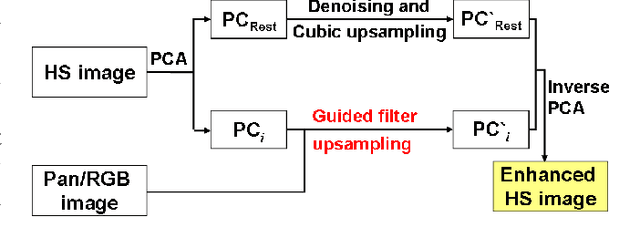
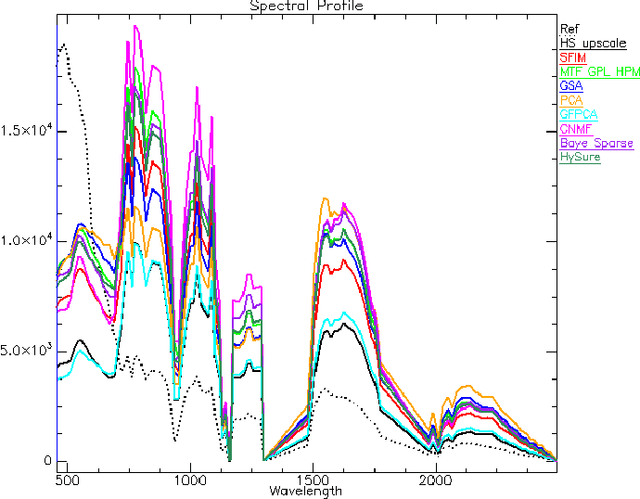
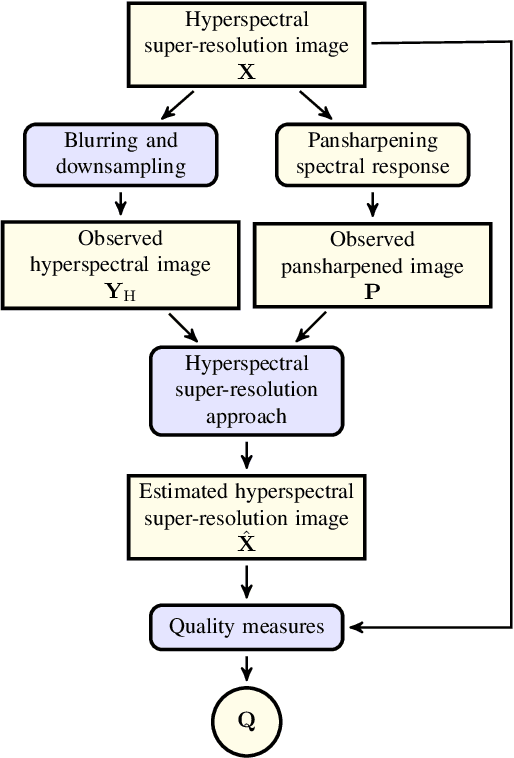

Abstract:Pansharpening aims at fusing a panchromatic image with a multispectral one, to generate an image with the high spatial resolution of the former and the high spectral resolution of the latter. In the last decade, many algorithms have been presented in the literature for pansharpening using multispectral data. With the increasing availability of hyperspectral systems, these methods are now being adapted to hyperspectral images. In this work, we compare new pansharpening techniques designed for hyperspectral data with some of the state of the art methods for multispectral pansharpening, which have been adapted for hyperspectral data. Eleven methods from different classes (component substitution, multiresolution analysis, hybrid, Bayesian and matrix factorization) are analyzed. These methods are applied to three datasets and their effectiveness and robustness are evaluated with widely used performance indicators. In addition, all the pansharpening techniques considered in this paper have been implemented in a MATLAB toolbox that is made available to the community.
Self-Dictionary Sparse Regression for Hyperspectral Unmixing: Greedy Pursuit and Pure Pixel Search are Related
Mar 03, 2015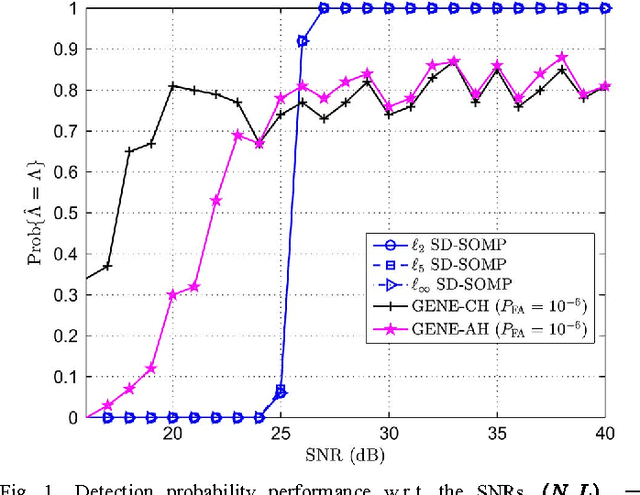
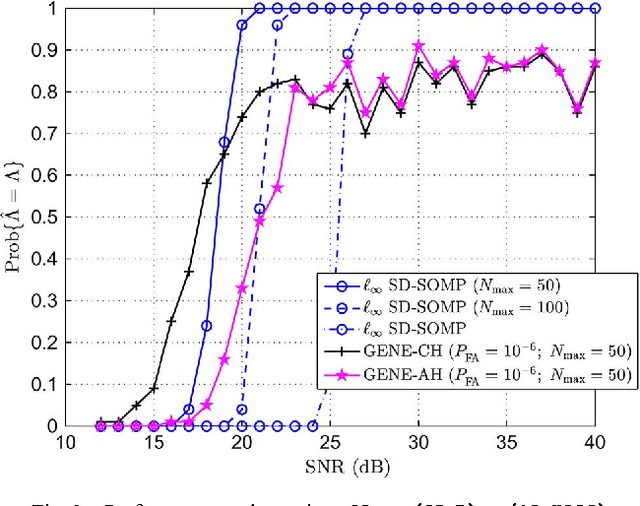
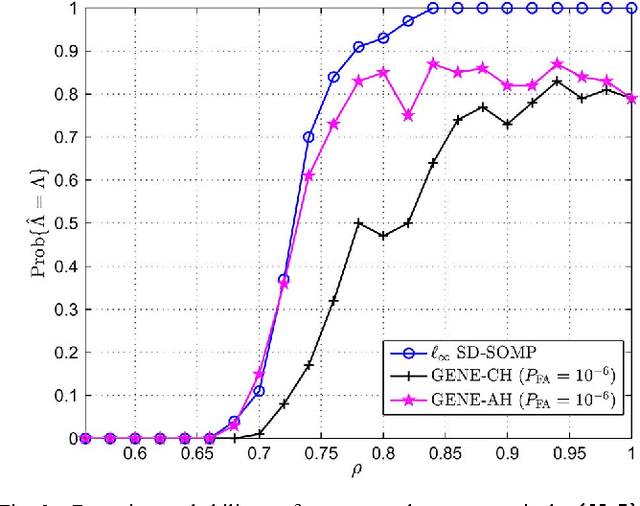
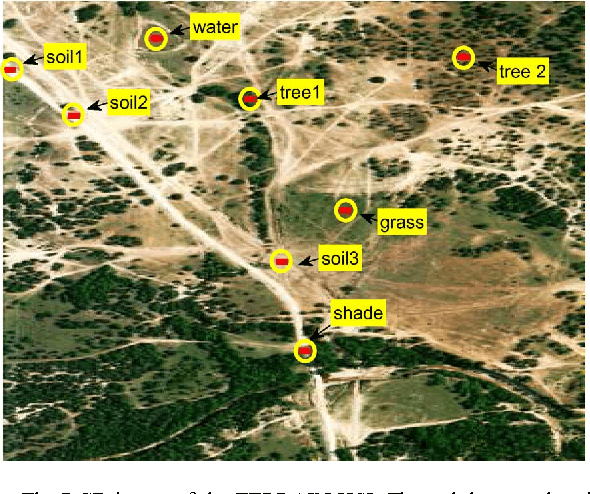
Abstract:This paper considers a recently emerged hyperspectral unmixing formulation based on sparse regression of a self-dictionary multiple measurement vector (SD-MMV) model, wherein the measured hyperspectral pixels are used as the dictionary. Operating under the pure pixel assumption, this SD-MMV formalism is special in that it allows simultaneous identification of the endmember spectral signatures and the number of endmembers. Previous SD-MMV studies mainly focus on convex relaxations. In this study, we explore the alternative of greedy pursuit, which generally provides efficient and simple algorithms. In particular, we design a greedy SD-MMV algorithm using simultaneous orthogonal matching pursuit. Intriguingly, the proposed greedy algorithm is shown to be closely related to some existing pure pixel search algorithms, especially, the successive projection algorithm (SPA). Thus, a link between SD-MMV and pure pixel search is revealed. We then perform exact recovery analyses, and prove that the proposed greedy algorithm is robust to noise---including its identification of the (unknown) number of endmembers---under a sufficiently low noise level. The identification performance of the proposed greedy algorithm is demonstrated through both synthetic and real-data experiments.
Hyperspectral Unmixing Overview: Geometrical, Statistical, and Sparse Regression-Based Approaches
Apr 24, 2012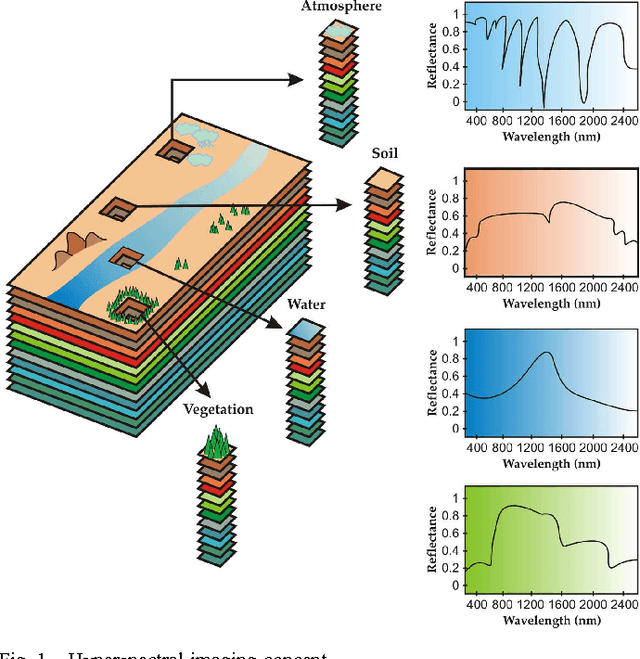
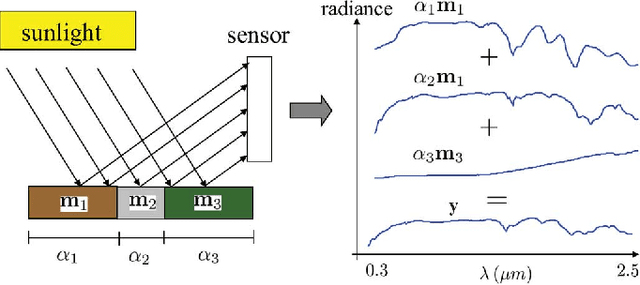
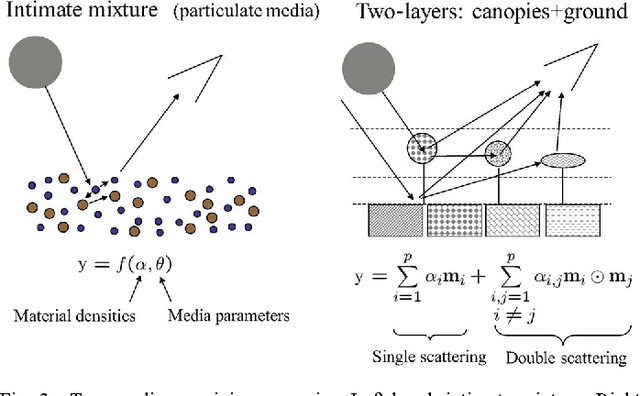
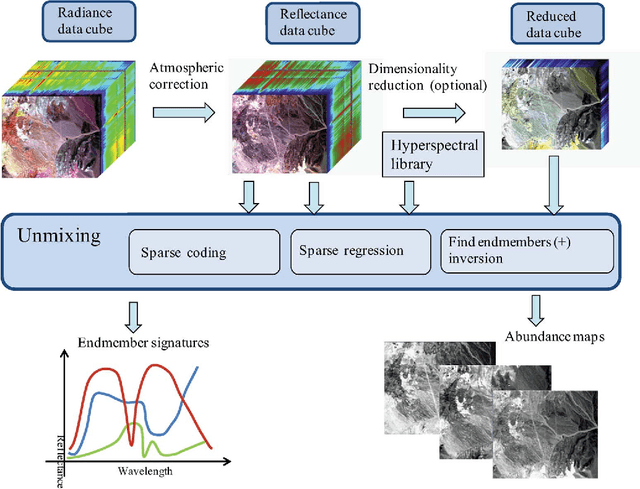
Abstract:Imaging spectrometers measure electromagnetic energy scattered in their instantaneous field view in hundreds or thousands of spectral channels with higher spectral resolution than multispectral cameras. Imaging spectrometers are therefore often referred to as hyperspectral cameras (HSCs). Higher spectral resolution enables material identification via spectroscopic analysis, which facilitates countless applications that require identifying materials in scenarios unsuitable for classical spectroscopic analysis. Due to low spatial resolution of HSCs, microscopic material mixing, and multiple scattering, spectra measured by HSCs are mixtures of spectra of materials in a scene. Thus, accurate estimation requires unmixing. Pixels are assumed to be mixtures of a few materials, called endmembers. Unmixing involves estimating all or some of: the number of endmembers, their spectral signatures, and their abundances at each pixel. Unmixing is a challenging, ill-posed inverse problem because of model inaccuracies, observation noise, environmental conditions, endmember variability, and data set size. Researchers have devised and investigated many models searching for robust, stable, tractable, and accurate unmixing algorithms. This paper presents an overview of unmixing methods from the time of Keshava and Mustard's unmixing tutorial [1] to the present. Mixing models are first discussed. Signal-subspace, geometrical, statistical, sparsity-based, and spatial-contextual unmixing algorithms are described. Mathematical problems and potential solutions are described. Algorithm characteristics are illustrated experimentally.
 Add to Chrome
Add to Chrome Add to Firefox
Add to Firefox Add to Edge
Add to Edge